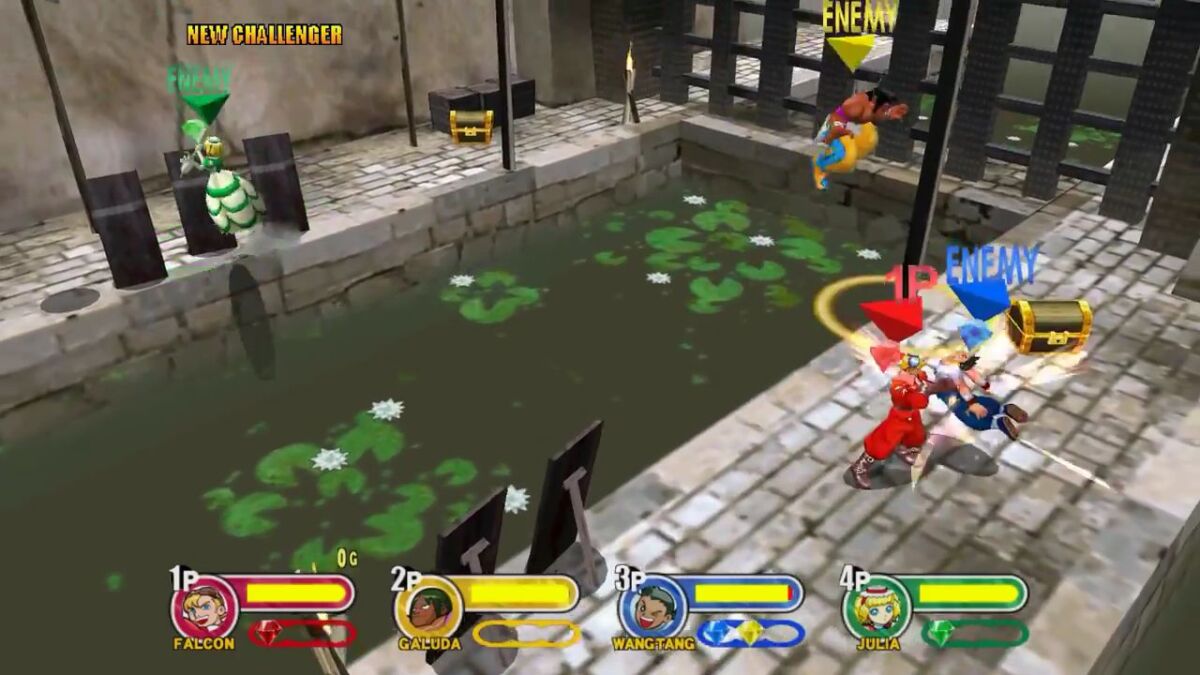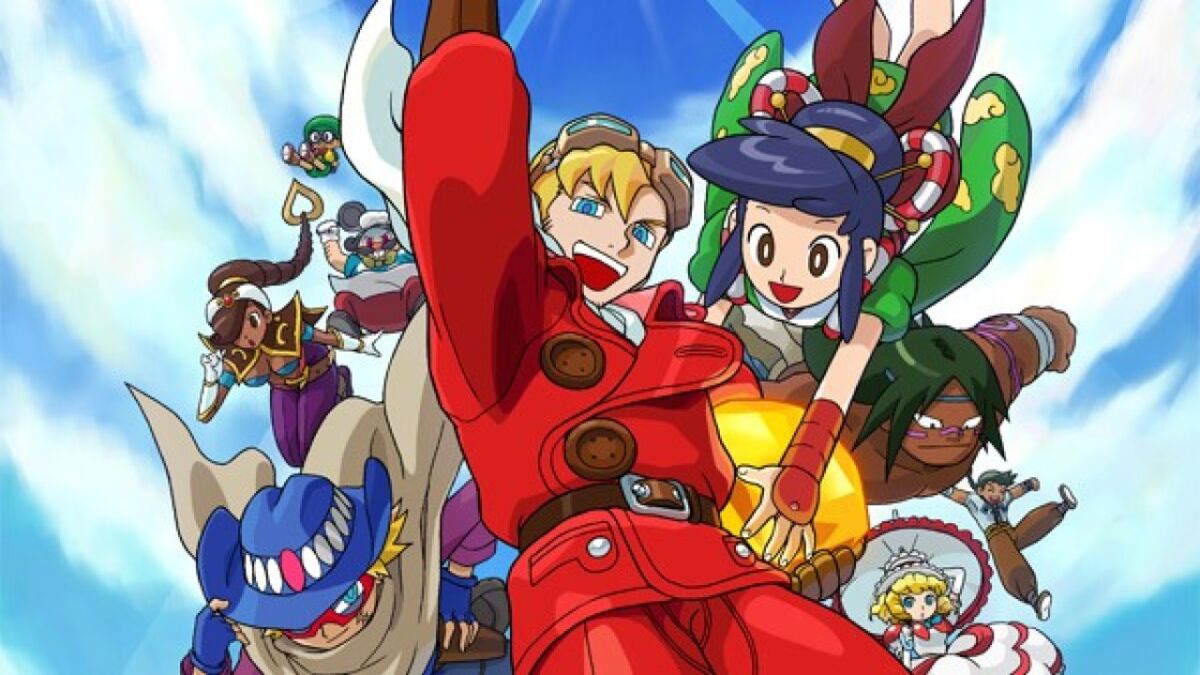Capcom’s fighting game back catalogue is arguably more bountiful than most publisher’s entire back catalogue. There’s plenty of franchises to pull from, and the majority of them have been pilfered in some form or fashion in recent fighting games. Capcom regularly takes Morrigan from Darkstalkers to place her front and center in a crossover fighting game, while Akira from Rival Schools is now a Street Fighter V DLC character.
One fighting game that seems to have been resigned to the vaults is Power Stone, a colourful 3D arena brawler that offers over-the-top action, hazard filled stages and plenty of opportunities for both hype and salt. The series has been missing in action for 15 years by this point, so we’re asking the age old question: will we ever see a new Power Stone game?
The History of Power Stone

By the mid to late 90s, Capcom had already established themselves as one of the mainstays of the fighting game genre. Street Fighter 3: New Generation launched in 1997, redefining the formula of Capcom’s flagship fighting game franchise, while titles like Red Earth, Darkstalkers, X-Men: Children of the Atom and the eventual Marvel and Capcom crossover games solidified Capcom’s hold on the arcade and home console market.
However, very few fighting games experimented with the idea of a 3D brawler. There were 3D fighting games like Tekken, Virtua Fighter and others, which took traditional 2D fighting game mechanics and translated them into the 3D space, but there was a gap in the market for something that offered the excitement that comes with playing a fighting, mixed with more casual elements that allowed anyone to pick up and play.
For a while, Power Stone was destined to be another 2D fighting game like all the others. However, producer Takeshi Tezuka revealed in an interview with The Guardian that the decision to change to an isometric camera perspective came midway through development: “The game started as a Street Fighter-style side-view fighting game where you would push the stick twice in a direction to move into or out of the screen. It was only halfway through development that it changed to an overhead view. I remember how great it felt once we’d got the game to a place where it seemed completely different from Street Fighter.”
Hideaki Itsuno, a designer on Power Stone, is something of a fighting game veteran, with credits on the likes of Street Fighter Alpha and Rival Schools. For Power Stone, he wanted to break the mold. “Working on 3D fighting games taught me how to retain the satisfying gameplay of a 2D fighter while providing the freedom of moving in a 3D space,” he said in that same article from The Guardian. “But one of my aims with Power Stone was to bring my experience to something that would be well received by players other than just hardcore fighting fans. Fighting games had become incredibly niche, and ordinary gamers were no longer able to keep up.”
In order to achieve this, the combat in Power Stone utilises simplistic inputs so players don’t have to memorise pages of special moves, and the strongest attacks are tied to the items that are cluttered around the environment. Itsuno mentioned that this was intentional to incorporate items as part of the game’s key strategies: “There aren’t many weapons, and they break, so even if they caused a high amount of damage, they wouldn’t break the game balance. We made the weapons powerful to encourage players to use them a lot. We didn’t want to just add something on top of the fighting gameplay so much as make items part of the fighting strategy itself.”
The Power Stone team ultimately developed the game on SEGA’s Naomi arcade board, which also featured the same technical specifications as the Dreamcast. According to Tezuka, this was the first time Capcom had touched the Naomi board, and the team were excited: “This was Capcom’s first time developing for those platforms, so it was definitely a trial by fire. But creating a new kind of fighting game on brand-new hardware made every day exciting.”
Power Stone would go on to launch in arcades in February 1999, with a release on Dreamcast a few weeks later. The items-focused combat drew comparisons to Nintendo’s Super Smash Bros., which launched around the same time on the N64, but the 3D brawling gameplay gave Power Stone enough for a unique selling point to become a stand-out Dreamcast game, so much so that a sequel was produced.
Power Stone 2 aimed to build on the formula outlined in the original game, increasing the max player count to four players, adding more characters and items into the mix and introducing more dynamic stages with hazards and platforming sections. The sequel would launch a year later on Dreamcast and arcade machines, achieving similar success to its predecessor and earning an 87 on Metacritic.
Where’s The Power Stone Series At Now?

As far as games are concerned, the Power Stone series was last seen on the PSP in 2006 with the Power Stone Collection. This PSP version of Power Stone remade both games with some minor improvements and bundled them together onto a single UMD, allowing you to enjoy the chaos of the series on the go. However, the collection wasn’t as fondly received as the original games, largely because multiplayer required both players to own a PSP and the game.
Since then, it’s been mostly quiet on the Power Stone front. The most we’ve seen Capcom acknowledge the series is lead character Falcon’s costume as part of the eccentric multiplayer DLC for Dead Rising 3, the snappily titled Super Ultra Dead Rising 3′ Arcade Remix Hyper Edition EX + α. Aside from that, it’s been radio silence as far as Capcom are concerned.
However, that hasn’t stopped the legacy of Power Stone living on in various forms, with 4 player 3D brawlers like Lastfight and Mighty Fight Federation seeking to evoke those nostalgic feelings that came from sitting four players in front of a Dreamcast and seeing what’s what. Or, at least, I assume there’s nostalgia there. I was seven at the time, with no Dreamcast, or friends. Still, the fact that games that offer similar thrills to Power Stone keep getting made suggests there’s a demand for it.
It’s also worth mentioning that not long after the release of the first game, Capcom released a short-lived, 26 episode anime series that followed main character Falcon as he searched across the world for both the titular Power Stones and his own father. The series ran in Japan in 1999, but would also receive a small Western release in 2003 with full English voice acting. You can find the DVDs for the six different volumes, but you’ll be paying a pretty penny to own them all.
Will There Ever Be A New Power Stone Game?

Like we’ve done in the past for certain Capcom franchises, we’re consulting the unfortunate ransomware attack that led to the Japanese company’s release strategy being released online. Onimusha was another game that was mentioned as part of that leak, alongside a Power Stone remake in Q3 of fiscal year 2024, suggesting we’ll see the series make a grand return, possibly in time for its 25th anniversary.
What gives more credence to this fact is that it’s one of the games IGN specifically mentioned by name as part of the leak. When covering Onimusha, we noted that IGN didn’t speak about Onimusha, despite them doing their due diligence to independently verify certain games like Dragon’s Dogma 2 or Street Fighter 6. The fact that Power Stone is mentioned gives the impression that there’s some legitimacy to that claim. IGN haven’t specifically confirmed it’s real, so there’s still an element of doubt, but it’s sure looking a lot better than Onimusha.
On top of that, Tezuko has gone on record in the past to say that they’d love to bring Power Stone back. As part of that interview with The Guardian, he says: “We weren’t just aping current trends or reiterating what had come before, and that has contributed to its lasting appeal. I still get messages from fans about the game. People tweet requests to me to make another Power Stone, which I’d love to do if I got the chance. It would be a particularly great fit for the Nintendo Switch.”
Even in 2021, Tezuko has reiterated that he’d love to work or be involved in something Power Stone related, even though he doesn’t work at Capcom any more. In an interview with Titan Game Studios, when asked about the likelihood of a Power Stone remake, he stated: “I don’t work for Capcom anymore, so I don’t think there’s much of a chance, but the people who made Power Stone 2 still work for Capcom, so I’m sure they’ll make a great sequel. I’d be happy to be involved in some way.”
If that leak is to be believed, and Capcom are working on a Power Stone remake, it’s going to be a while before we see anything about it, but the idea of a new game lurking on the horizon might be enough to keep fans satisfied. If not, there’s a few spiritual successors knocking about to keep you occupied in the meantime.
READ MORE: Will We Ever See A New Viewtiful Joe Game?
Some of the coverage you find on Cultured Vultures contains affiliate links, which provide us with small commissions based on purchases made from visiting our site.
